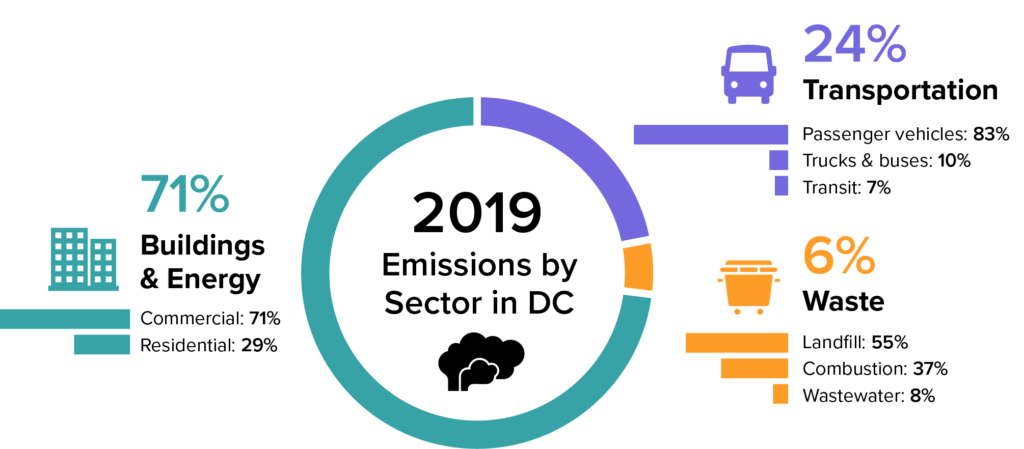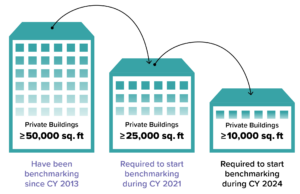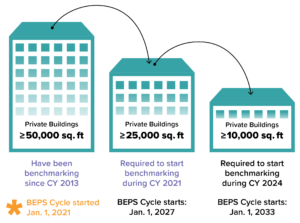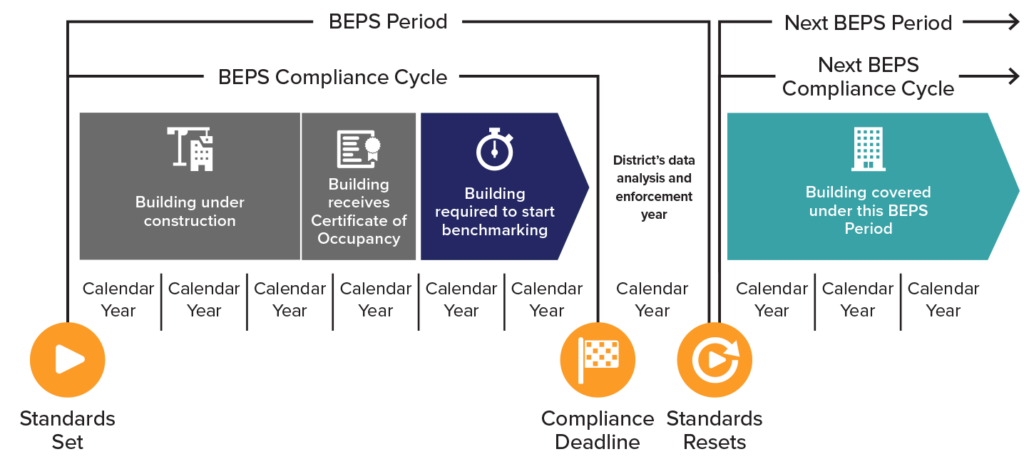Note: for specific details and updates on the rulemaking, see our article.
Introduction
The Building Energy Performance Standards (or BEPS) are a regulatory tool that the District is using to help meet its green building and climate goals, as outlined in the Clean Energy DC Plan, the District’s strategic energy and climate action plan to make the District more sustainable, resilient, and equitable. This plan outlines actions that need to be taken, by both private industry and the District government, between now and 2032 in the District’s buildings, energy infrastructure, and transportation system to meet the District’s ambitious greenhouse gas (GHG) reduction targets.
The District will use three broad strategies to achieve deep GHG reductions:
- Efficient building design and operations for both new construction and existing buildings
- Modernized and renewable energy supply, shifting the District’s grid away from the use of fossil fuels and maximizing local renewable energy generation
- Transportation electrification and mode share changes
Since buildings account for 71% of the District’s GHG emissions, reducing the amount of energy used in buildings is paramount in order to achieve the District’s climate commitments.





